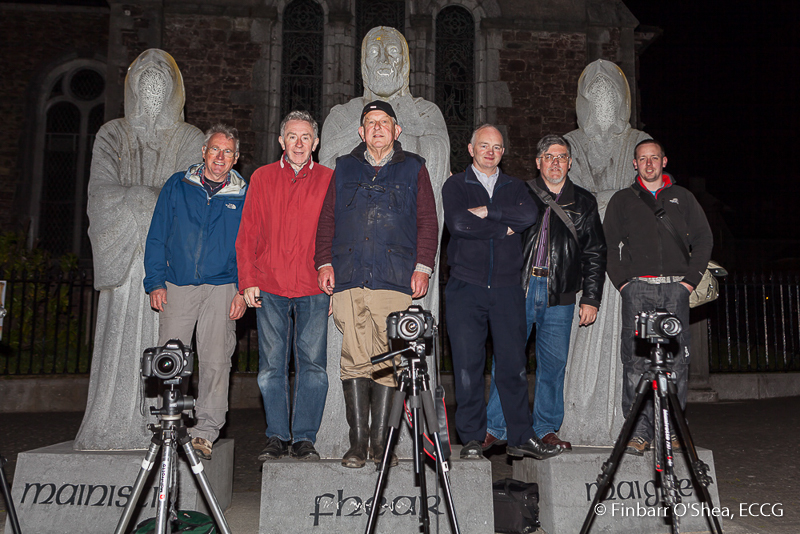
On Sunday last the group decided to convene at the village of Glanworth in North Cork. Glanworth lies on the banks of the river Funcheon about 5 miles north west of Fermoy and is a village steeped in history as attested to by the many ancient ruins that abound there. Megalithic tombs, dolmens, standing stones, souterrains and stone circles are scattered throughout the parish on a scale that is rarely surpassed elsewhere.
Our first photo location involved the ancient Glanworth Mill. Nestled under the castle and beside the bridge, this late 18th century mill provided Glanworth with its first taste of the industrial revolution. The Mill itself is an impressive edifice, originally consisting of four storeys and built during the famine times as a flour mill. The mill was later converted to a woollen mill which operated until the late 1960's. The mill with its mill wheel, and associated mill race, weir and location next to the 15th century bridge, provided many photo opportunities. A slight moment of concern was raised for a member of the group who went AWOL for a period. He eventually surfaced and it was revealed that he had been steadfastly focused on a photo-op with an unobliging otter.
We next ascended the steps to the Roche Castle located on the rocky promontory above the mill. The castle has, in recent years, been excavated and many previously hidden features have been exposed. All were impressed with the structure and comments were made, echoed by myself, that the castle would make a great location for a late-evening light-painting shoot.
The ruined Dominican Friary could be observed from the castle and we headed there next taking the longer route through the village. The Dominican order set up a friary in Glanworth in 1475 on the invitation of David Lord Roche, Viscount of Fermoy and the occupier of Glanworth castle. However their time in Glanworth soon coincided with the religious persecutions of the following centuries, so by the end of the 18th century they were no longer being assigned to Glanworth. Now all that remains of the friary is the church with its square central tower.
There were now some slight murmurs among the group about food, accompanied by the occasional stomach rumbles. The consensus was that we should head to Fermoy for some sustenance stopping at the Labbacalle Megalith en route.
Labbacalle is one of the best examples of a Megalithic Tomb in the country and was probably built around the Neolithic or Bronze Age - almost 5000 years ago. The name Labbacallee means "the bed of the old woman" and is known locally as "The Hag's Bed". Excavations in 1934 produced the skeleton of a female along with four others. The tomb is known as a wedge-shaped gallery grave, narrower at one end and with the capstone sloping towards the narrow end. Originally, the whole structure would have been covered with a large mound of stones and earth. Again, this location was deemed worthy of a return trip at a different time of year when the setting sun aligns the tomb. The possibility of light-painting was also discussed here.
After the welcome consumption of delicious sandwiches and hot beverages, we decided to do a sunset shoot around Fermoy Bridge on the banks of the Blackwater. While the sunset was not the most spectacular, some useful shots were obtained along O'Neill-Crowley Quay. After the sunset, we took some slow-shutter shots from across the river after the street lights came on.
Our final act of the day was a shot from Christ Church across the bridge to Pearse Square. This provided an interesting perspective and produced some nice light streaks from passing traffic. I think some motorist confused our lenses with speed guns as they reduced their speed on approaching us. We finallyheaded homewards at 23.00.
Check out the gallery from the shoot here.
- Michael Hickey
